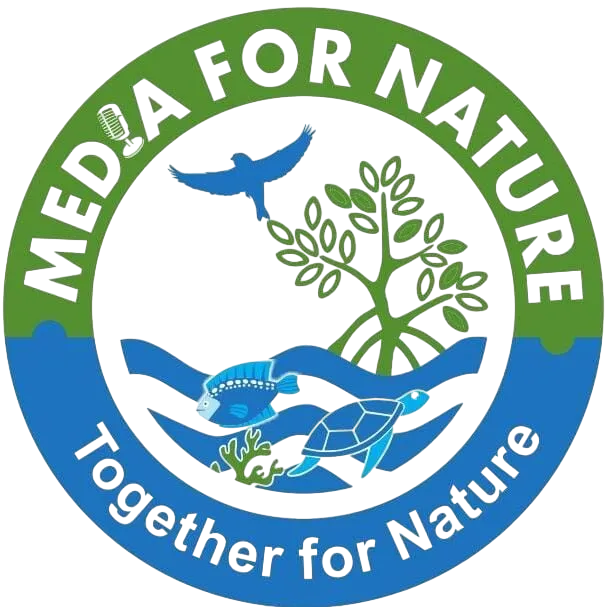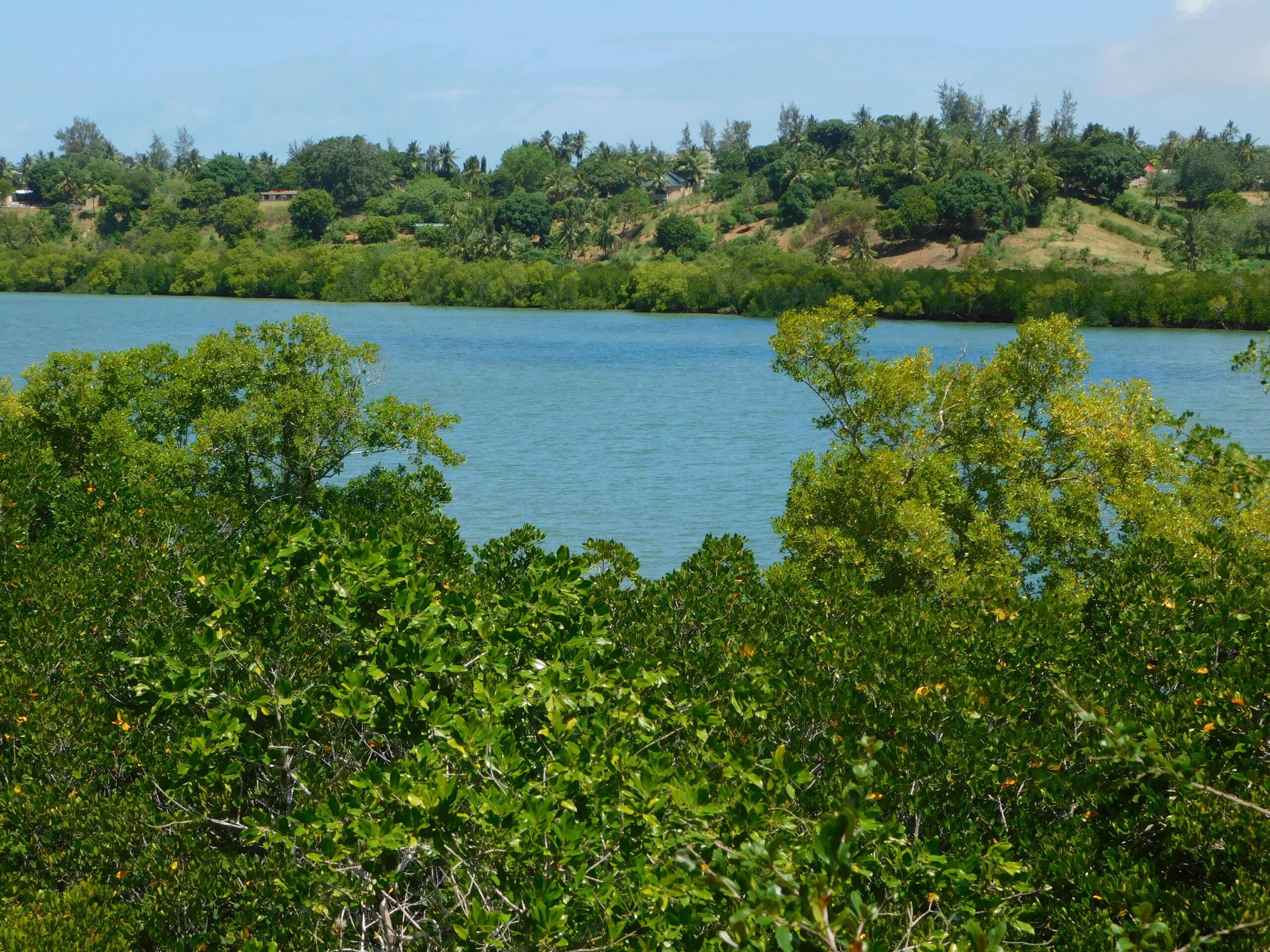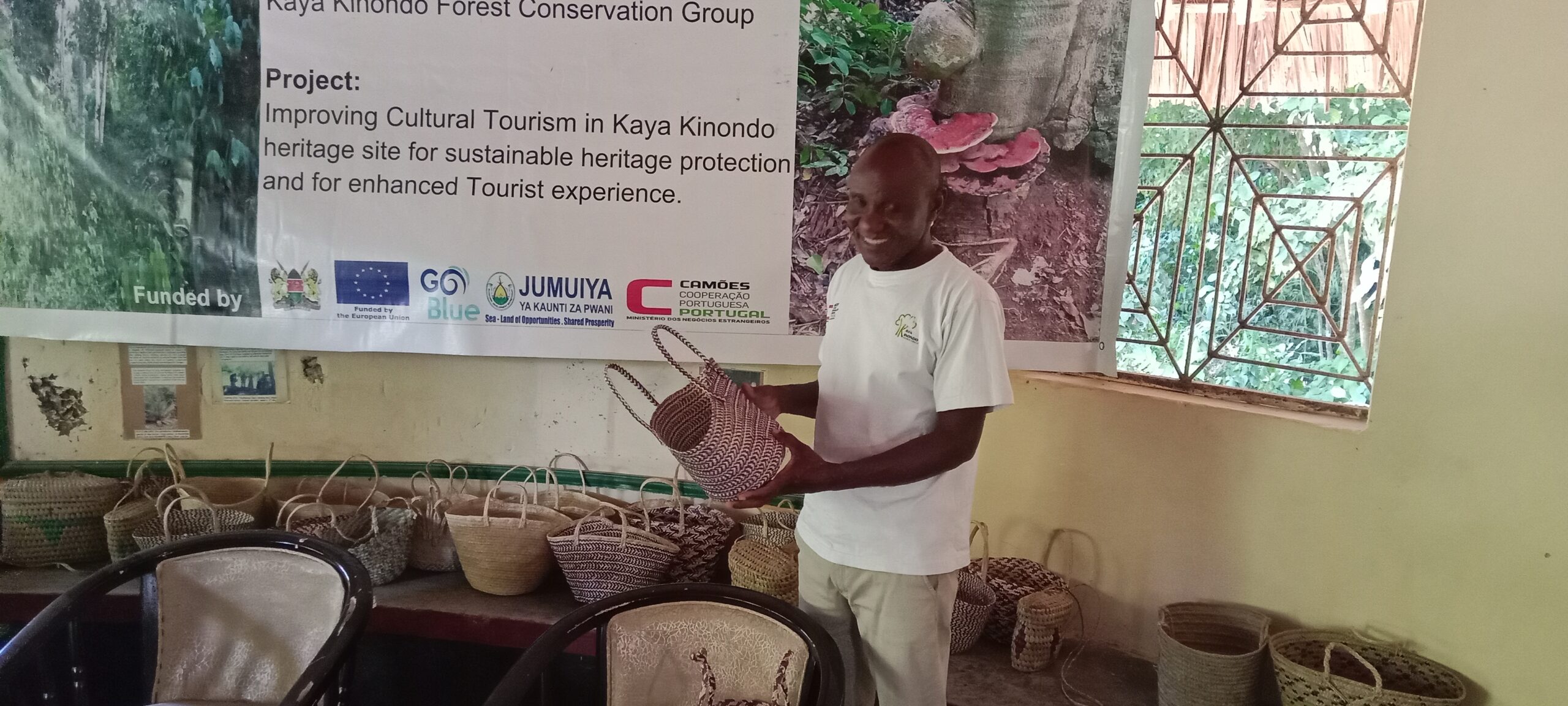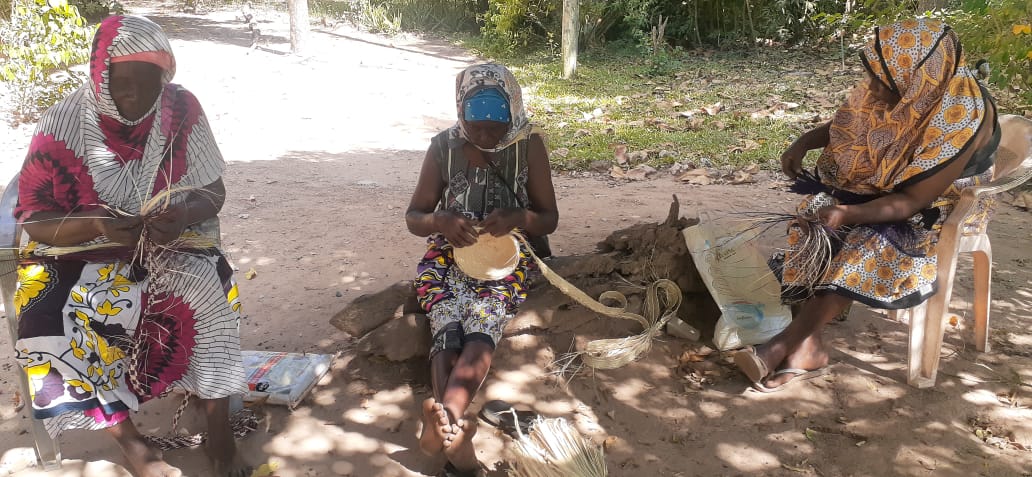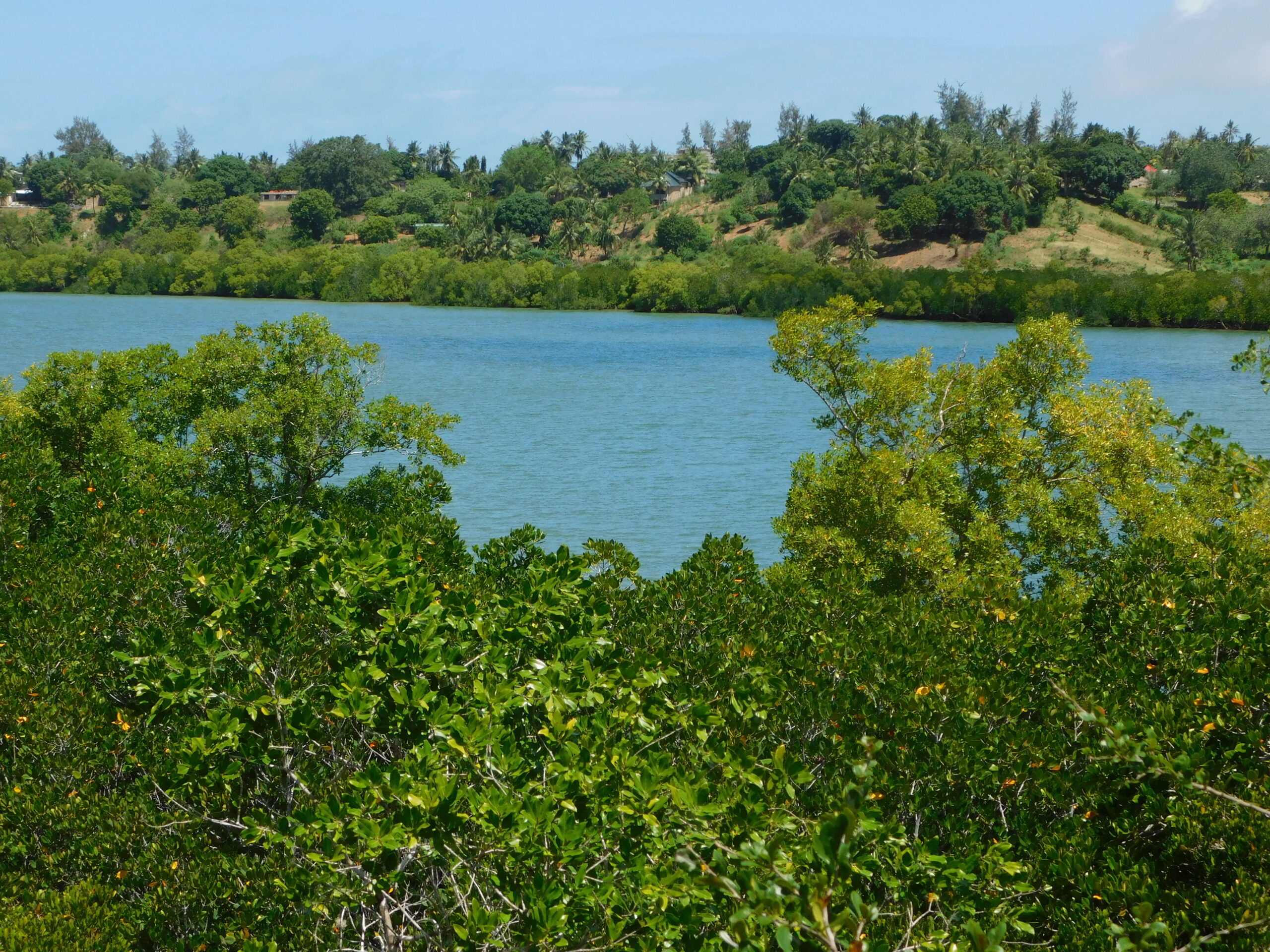A picturesque view of the Mtwapa creek from the Kwetu Training Centre viewpoint/ Photo By Mazera Ndurya
For decades, members of the Kidongo Beach Management Unit (BMU) in Majaoni, a fishing community group have rowed across the Mtwapa creek eking their living as fishers. Fishing is their main economic activity using the creek which bestrides both Mombasa and Kilifi counties with their dugout canoes as their main fishing tools.
However, even with some help, with equipment, from well-wishers, they have been expressing that their fish capture is going down. Researchers, through extensive studies have linked reduced fish stocks to destruction of mangroves and the Mtwapa case is no exception.
One of the organizations that has been at the centre of mangrove conservation and working with the community, Kwetu Training Centre, has also been part of the solution to the challenges faced by fishers.
Kwetu Training Centre, with its location adjacent to the Mtwapa started to help coastal communities utilize natural resources in a sustainable manner to address lack of economic opportunities and increased poverty levels.
Kwetu Project Coordinator Mercy Marende said, “In 2021 having worked with this community for so long, we realized that there are those issues which have not been resolved over the years. We have worked with them on different projects but our environment which is the mangrove ecosystem is experiencing a lot of biodiversity loss.
“There is a lot of cutting of mangrove trees leading to reduced capture fisheries for the local communities. We saw it fit to engage the community to see where the problem is and what solutions can be.”
In 2021 Kwetu gathered the communities within Mtwapa creek that are utilizing the creek itself both in Kilifi and Mombasa counties in focus group discussions trying to see what opportunities are available in the blue economy sector.
Mercy said they realized that one of the key economic ventures that the community here have not really gone into was ecotourism.
“Tourism is done in the coast and in fact it is the backbone of the economy of the region but it is majorly done at the beach hotels without realizing that the communities that live within this area, who are the users of these natural resources too should be benefitting from what is available around them,” she said.
During the meetings one of the things that came up was that they could integrate tourism within their works. The ecosystem users groups are community based organizations and involve youths and women that are within the villages around the creeks. The groups are organized in such a way that they have activities that they do that respond to the environment and social issues.
One of the nature based solutions that was proposed in these meetings was that tourism is one thing that is not extractive in terms of use of the mangrove ecosystem.
“We saw we can do it in a way that is consciously taking care of the environment and it might not need very big investment that the community groups cannot manage. This is what we put together as a proposal to the Go Blue project that we would like to help our communities that are utilizing the Mtwapa creek mangrove ecosystem.
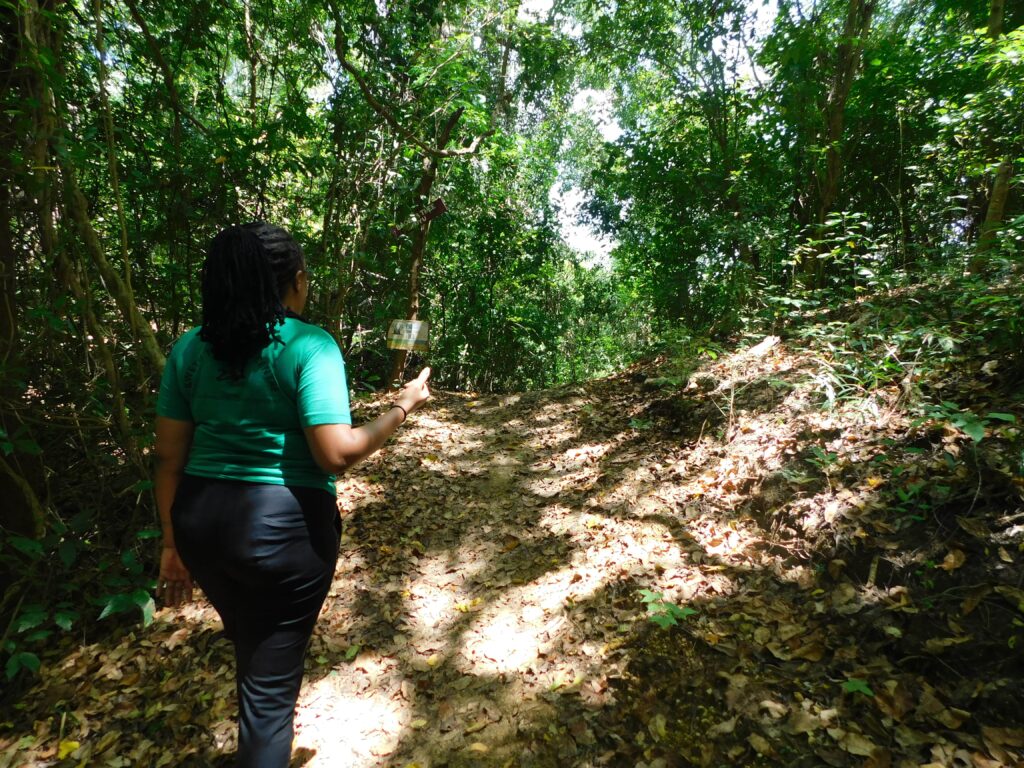
Kwetu Training Centre Project Coordinator Mercy Marende walking us through the mangrove trail/ Photo by Mazera Ndurya
“The advantage was that already, they had fisher boats therefore incorporating tourism would mean them to upgrade their fisher boats so that it is accommodative to tourism in the creeks.”
This was a mixture of activities so Kwetu as propagators of eco-tourism and they have done this over the years even though it’s not their core business, Mercy said the project supported by Camoes grant has enabled them to invest in eco-tourism as a business .
“That was the main agenda for the eco-tourism and cultural heritage – how to economize tourism and cultural heritage within the coastal community.
The Go Blue Project is a project of the Government of Kenya and the European Union to advance coastal development agenda and the blue economy. The Go Blue Tourism and Cultural Heritage Component Action is funded by Camões, I.P., the Portuguese Development Corporation, in collaboration with the Jumuiya ya Kaunti za Pwani (JKP) Economic Development Secretariat.
With the grant of 50,000 Euros, a lot of capacity building was done by Sustainable Travel and Tourism in Africa (STTA) which was the implementing arm of Camões, I.P on the ground providing the technical knowledge and a lot of linkages. It was an 18 month project that ended in May, 2024.
Mercy said “It was a journey towards improved livelihoods reaching close to 200 beneficiaries with 182 of them reached directly benefitting from knowledge, skills and the input that we supplied them with in terms of the infrastructure”.
One of the groups that benefitted from the grant and took up the task of rehabilitating the mangroves while running a successful eco-tourism project was Community Environmental Sustainable Mariculture (COMENSUM).

A section of the boardwalk at Kwetu Training Centre constructed with funding from the European Union’s Go Blue project/ Photo by Mazera Ndurya
In 2017, they established an eco-friendly information center and restaurant on a formerly degraded mangrove area. The COVID-19 pandemic led to the closure of the restaurant located along Mtwapa Creek.
With a grant of approximately Kshs 500,000 from the project, which was meant to counter the negative effects of COVID-19 on global tourism, aiming for both recovery and growth of the sector, the chairman of COMENSUM David Taura said they were able to bounce back, and renovated the mangrove Snapper restaurant.
The renovated restaurant, which has expanded its capacity from 50 to 150 guests, has created job opportunities for at least four staff members, with additional casual laborers hired as needed.
In another grant, they worked with a women group incorporating conservation activities such as bee keeping in the mangrove forest. Beekeeping is a lucrative economic activity that if done well would keep the communities off mangrove cutting.
As part of the project, Kwetu constructed a boardwalk through the funding from the Go Blue inside the mangroves complete with a view point that provides a picturesque view of the creek and the lush mangrove canopy.
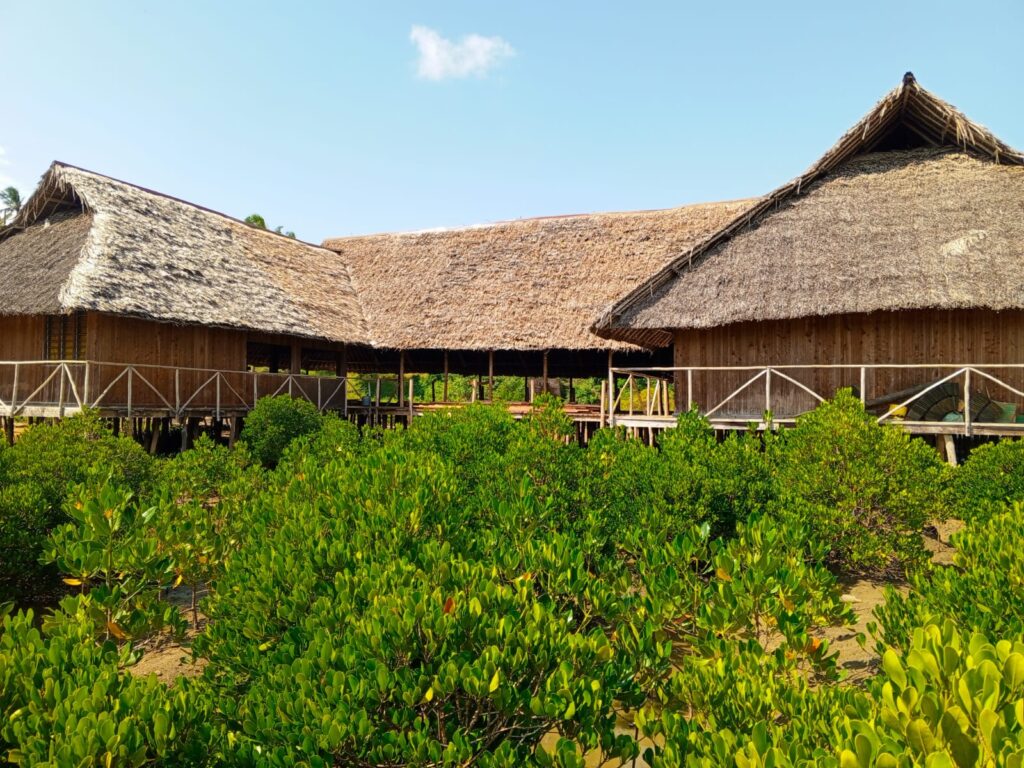
The newly constructed Comensum information centre and eco-restaurant in along the Mtwapa creek/ Photo Courtesy David Taura
Mercy said since the various projects within the creek are interrelated, they have created a tourist circuit where visitors going to Kwetu are connected to the community.
“They are treated to canoe and boat rides across the creek before settling in the village for entertainment comprising traditional dances and get the opportunity to sample and buy handcrafts made by women groups.
“Their final destination is a sumptuous meal at the Eco-restaurant run by Comensum for either lunch or dinner. At the end of the day everyone gets something to take home while ensuring that the mangrove ecosystem is safeguarded,” said Mercy.
In Kwale County, women have taken the task of rehabilitating and conservation of mangroves a notch higher, mixing eco-tourism and conservation to earn a living.
Mwatime Hamadi, a tour guide for the Gazi Women Mangrove Boardwalk Group said they benefitted from the joint European Union and Kenya Government Go Blue project through another organization called APTDC. The project funds came from Camões, I.P., the Portuguese Development Corporation, in collaboration with the Jumuiya ya Kaunti za Pwani (JKP) Economic Development Secretariat.
They applied for the funds to address some of the challenges they were facing on the boardwalk. Initially, they had requested for funds for the extension of the boardwalk to make it a full circle but they were awarded Ksh250,000 which was used for the construction of two gazebos overlooking the creek.
On their part, the women contributed wood materials to supplement the grant that successfully saw the completion of the gazebos.
“The need for additional gazebos in the mangroves came due to inadequate space for our guests to relax and watch the beautiful scenery and birds and we have seen the benefits of having guests satisfied and happy.
“Part of the project included training on how to utilize the funds with some of the objectives being to help the community and employ some members of the community around,” said Mwatime.
The aspect on youth empowerment through the project was realized with the employment of an accountant and a tour guide.
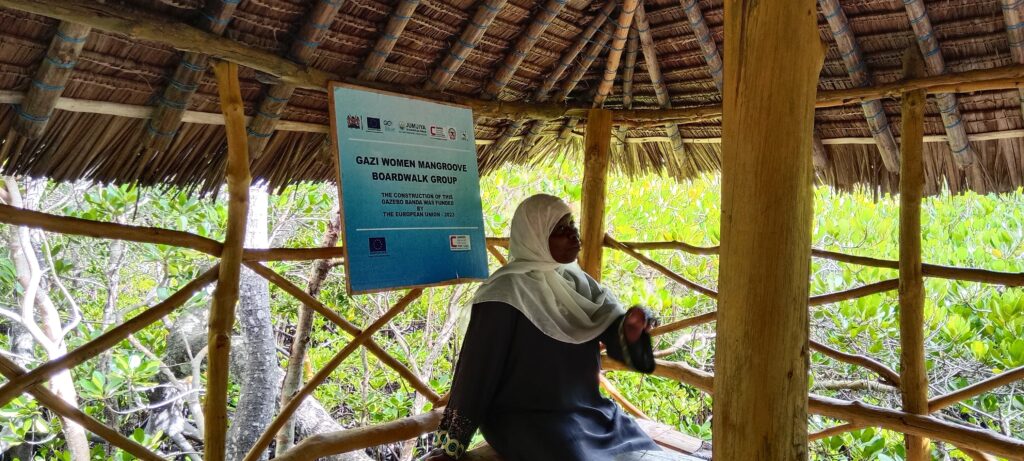
Mwatime Hamadi Gazi Women Mangrove Boardwalk Group tour guide resting in one of the gazebo built with funds from the Go Blue project/Photo by Mazera Ndurya
“This project has given us a very big boost in terms of management. Previously, we used to get a lot of money but could not keep track of it. The employment of an accountant and the knowledge imparted on the members helped a lot in streamlining our operations.
“We have also seen an increase in the number of visitors from about 150 in a month to about 250. What we need to do now with the website that is being finalized is to aggressively market our product to attract more visitors,” she said.
STTA Team Lead Judy Gona said the Go Blue project was in response to poor participation of local communities in tourism and cultural heritage value chain so even where culture was being offered there was poor participation of the local community.
Camões, I.P. intervention can be summarized in three high output areas;
“There would be innovative small projects and businesses that would receive support so that they can create employment, contribute to diversification of tourism products and influence the dynamics in the tourism value chain within the JKP economic block
“Building the capacity of JKP at Secretariat level to be able to work with integrated governance of complex problems of equity, exclusion within the tourism industry
“Build the capacity of young job seekers within the coastal counties to become employers and transformative, inspired social leaders that would drive change and also drive entrepreneurship as a way of developing self-employment,” Judy said.
